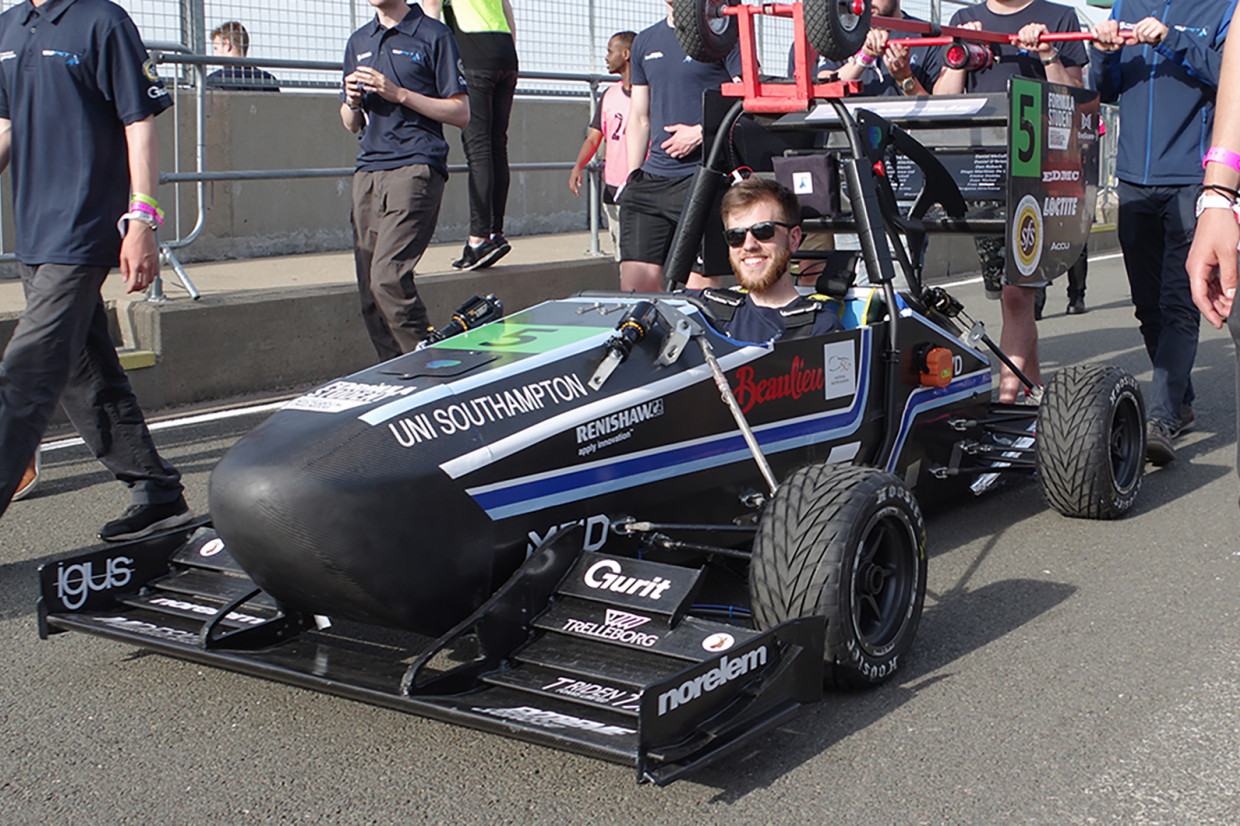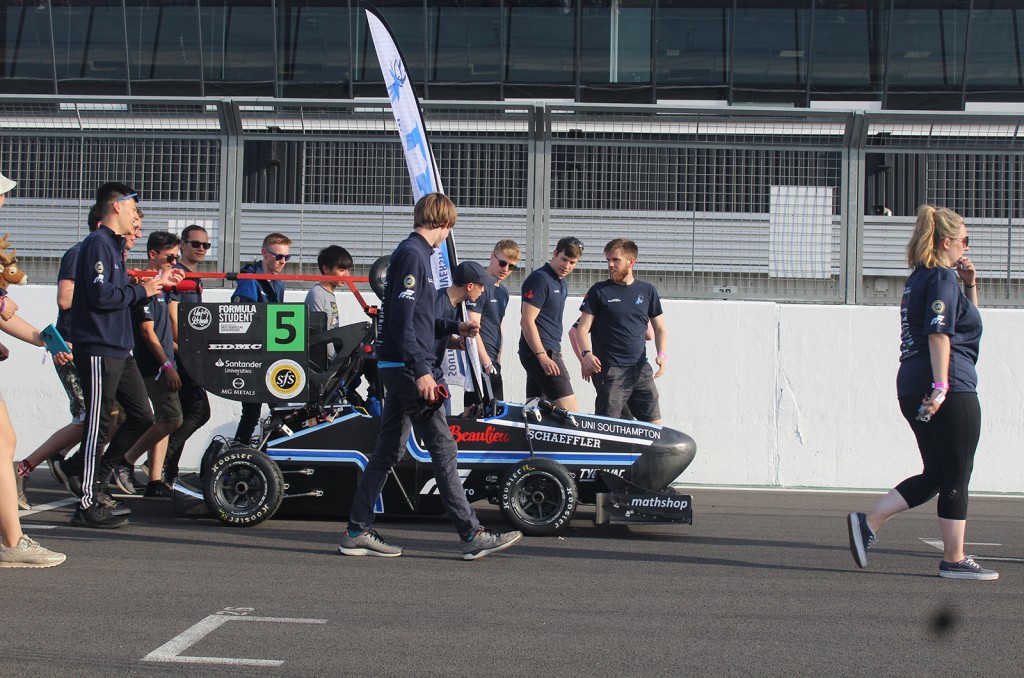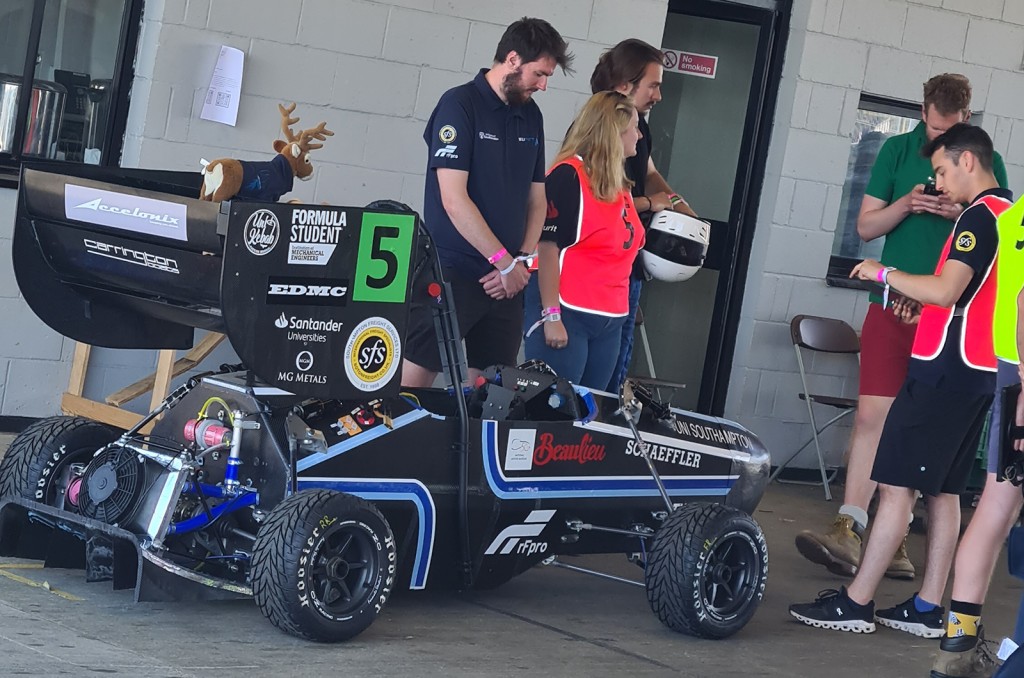
Television’s University Challenge may be the quiz show everyone knows but away from the studio lights another, arguably more important, student contest occurs each year at Silverstone: Formula Student, a competition to find the best student-designed and built single-seat racing car.
When the event was first held back in 1998 combustion engines were virtually the only powertrain used. But organisers have embraced alternative fuel categories for years, and almost half of the entries for this year’s event, staged in July, were electric.
The latest electric news in your inbox: subscribe to our FREE newsletter
For many teams, this was their first experience of designing and building an electric race car and, inevitably, it showed. One team that made the transition this year, and which faced its fair share of challenges, was the University of Southampton's 70-strong cohort of budding engineers and supporters.
Just days before the competition, the team behind Stag 8, the university's lightweight, 230kg, 80kW electric racer, found themselves waiting anxiously for a last, critical component. Sadly, it didn't arrive in time, so the team found their car being judged as a static concept rather than out on the track.

"The missing part was just one of many issues we faced during the car's 12-month development," admits Ryan McDermott, a fourth year Aeronautics and Astronautics student and team leader of the Southampton University Formula Student Team (SUFST). "We had lots of experience designing and building petrol-powered cars for previous competitions but this was the university's first electric entry, so problems were inevitable."

True to the spirit of Formula Student, billed as Europe's most established educational engineering competition and backed by industry and high-profile engineers including Ross Brawn OBE, its patron and a leading figure in Formula One, McDermott and his team agreed to make their first electric car an exercise in learning.
"We decided from the start to make Stag 8 a learning experience. It's why we made the car a full carbon fibre monocoque and designed our own battery rather than source one off the shelf. We knew the theory but how would it play out in practise?"

Gurit, a specialist in composites and one of the team's commercial partners, supplied the carbonfibre and gave technical support, while the university's wind tunnel was invaluable for aerodynamic work. However, for the battery McDermott and his colleagues were largely on their own.
"We wanted to design our own cell configuration so sourced the individual cells and built the battery structure to accommodate them,” he says. “It sounds straightforward but assembling the battery was a real challenge."

Also challenging was designing the control electronics and battery management system to ensure everything was safe and robust and that it all interacted correctly. Configuring the motor and understanding how the various software parameters influenced its behaviour was another long, learning journey.
But challenging though it all was, the fact that the team went to the trouble of designing and building their car's battery and control systems meant they were well placed to impress the judges, ever on the look-out for evidence of problem-solving, initiative and the ability to explain and justify their decisions.

"Together with our hypothetical business plan, which included proposed manufacturing methods and production costings, our development work on the car is possibly why we won the Static Prize and the Faraday Institute's Best EV Newcomer prize – the first awards the university has won in the competition," says McDermott.

And those anxious late nights won't be wasted, either. Next year, the team, under a new leader since McDermott has now graduated and is off to work for a leading F1 team, will continue Stag 8's development.
"We're taking on board all of the scrutineers' comments," says McDermott. "For example, since the competition we've been re-evaluating the battery's structure in line with their suggestions, with a view to incorporating the changes in the car's successor which will be called Stag 9."
One thing they'll certainly be doing is ensuring every last component has been delivered before the big day.

John Evans
READ MORE
Subscribe to the Move Electric newsletter
e-CARS
Video: Can the National Grid cope with a surge in electric vehicles?
e-BIKES
What to look for when buying an e-bike: Move Electric's top tips
The rise of Volt Bikes: 'when we launched, people thought we were mad'
e-MOTORBIKES
Maeving RM1 electric motorbike review
Q&A: Zapp founder on why electric mopeds are the future
Government plans 2035 ban on new non-zero emission motorbike sales
e-SCOOTERS
Tier to upgrade e-scooter fleet with a smart 'Parrot'
Q&A: Neuron Mobility's UK boss on e-scooters, safety and helmet selfies
e-WORLD
Polestar to supply battery tech to electric boat firm Candela
Engineering giant ABB working on electric Dover-Calais ferry

